Adventurous Kate contains affiliate links. If you make a purchase through these links, I will earn a commission at no extra cost to you. Thanks!
When’s the best time to visit New Orleans? New Orleans is one of my favorite cities in the world — bustling and animated; filled with music, food, and art; home to incredible people you’ll never forget.
Many American cities can be visited comfortably at any time of year, but you need to be a bit more careful about when to visit New Orleans, Louisiana. New Orleans has very hot, very humid weather and is prone to severe storms for much of the year.
In fact, if you hate humidity, you need to be even more careful about the time of year you choose to visit New Orleans. Even in May or October, you could be sweating through your clothes.
Additionally, New Orleans is a HUGE festival town, and you need to plan around that a bit. Festivals like Mardi Gras and Jazzfest can be incredibly fun, but they are an expensive and busy time to visit.
Generally speaking, the best time to visit New Orleans is from February to May — this is when the weather is mild and many of the festivals and events occur. Of course, longtime New Orleanians know that this also happens to be the busiest time of year to visit, and prices and crowds are at their peak.
New Orleans is one of the best places to visit in the US, and I want you to have the best trip possible. That starts with figuring out the best time to visit New Orleans for you personally.
Table of Contents
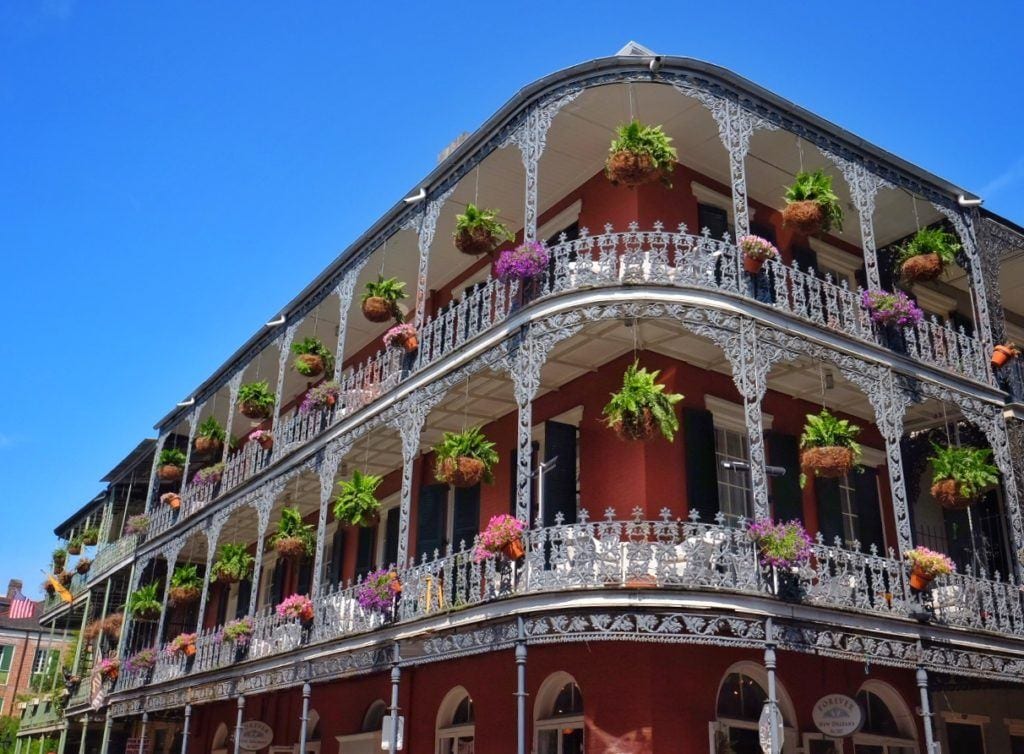
Best Time to Visit New Orleans
The best time to visit New Orleans for most people is during the months of February, March, April, and May. The weather ranges from cool to warm, and the humidity is minimal. For this reason, many of New Orleans’s best festivals and events take place during this time of the year, and the city is very lively.
February through May has the best weather throughout the year because the temperatures are mild and much less humid than the summer months. While there can always be rainstorms, you’ll generally have a mild time of year during these months.
The two biggest festivals are Mardi Gras, which usually takes place in March, and Jazzfest, which usually takes place in April.
The summer months are the cheapest time to go to New Orleans because the weather is extremely hot and humid. If you can handle the weather, you can find some great deals.
March is a great month to visit New Orleans — either during Mardi Gras or not, depending on your preference.

Best Time to Go to New Orleans
Did you know that New Orleans is the rainiest major city in America? (I was surprised to learn it’s much rainier than Seattle!) Like many places in the Deep South, New Orleans has hot and humid weather for much of the year, the humidity giving way to intense bursts of rainstorms.
You can expect high humidity throughout the year, though it often feels less during the cooler months of year. Summer months are fiercely, often unbearably hot; winter and spring are far more mild; fall brings the risk of severe storms.
Good thing New Orleanians know how to enjoy every month of the year!
New Orleans in Spring
Spring is the most popular time to visit New Orleans because the weather is mild and comfortable and it’s when the major festivals take place. It can also be a very pleasant time to visit because this is when flowers start to be in bloom. Spring brings the biggest crowds of the year.
What kind of temperatures should you expect? The temperature in the spring usually ranges from the low 70s to mid-80s Fahrenheit.
Keep in mind that there is a lot of variation within this: March brings the kind of weather where you might need a jacket at night, but by the time you hit late May, you’re well into summer weather.
New Orleans in Summer
Summer in New Orleans is not for the meek! The searing heat, when coupled with the intense humidity, can be uncomfortable for many people. Summer temperatures average in the high 80s and low 90s Fahrenheit, though it often feels much hotter.
Summer is also the rainiest season in New Orleans, so don’t go anywhere without your umbrella.
There are benefits to visiting New Orleans in summer, though. This is the least busy time of year for tourism, and you can often find great deals for much less than what you’d pay in April.
If you choose to visit New Orleans in the summer, do as locals do and stay inside during the hottest hours of the day, from noon through 4:00 PM. It’s much more pleasant being out and about at night.
New Orleans in Fall
Fall in New Orleans is a mixed bag. September is the highest risk for hurricanes and other severe storms — but things settle down more in October, and once you get to November and December, temperatures have become far more pleasant again.
November and December can be wonderful times to visit New Orleans, and they have the added benefit of fewer tourists. This is a great offbeat time to visit the city.
New Orleans in Winter
If you hate the heat, winter is your best bet for enjoying your time in New Orleans! Weather tends to hover in the 60s Fahrenheit, with occasional dips lower, which is a comfortable temperature for walking around. This tends to be a quiet time of year for visitors, so there are fewer tourists in the city.
Does it snow in New Orleans? Rarely, but it does happen on occasion. I have some friends who have ended up with snowy trips to New Orleans! It’s hard to predict ahead of time, but be vigilant about checking the forecast before you leave on your trip, just in case.
And if it’s not snowing, you can plan on more of New Orleans’ trademark rain.
One major tip for visiting New Orleans in winter: if you’re flying from another city, be careful about connecting flights. Flying through Chicago puts you at risk for snowstorms and canceled flights; flying through Atlanta means you’re probably in the clear.
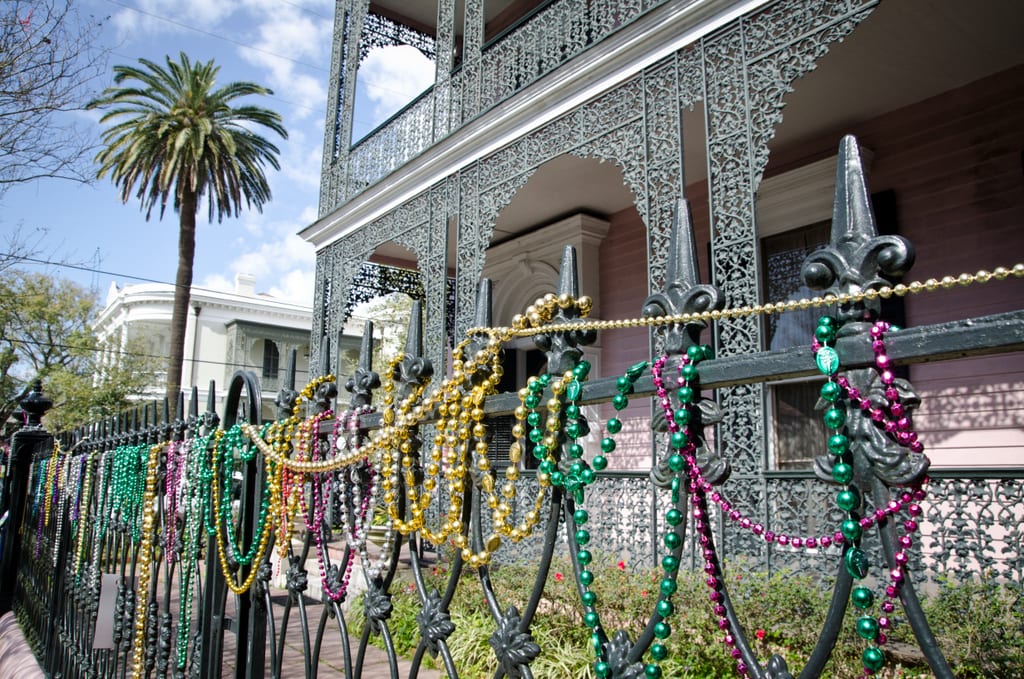
High Season and Low Season in New Orleans
The high season in New Orleans is during the months of February through May. Once again, you have good weather to thank for this season’s popularity, but this is also when some of the biggest festivals of the year take place.
The absolute peak of high season is during Mardi Gras, which usually takes place in March, though occasionally in February. Other peak times in the city include party holidays like Halloween, New Year’s Eve; long weekends like Memorial Day and Martin Luther King Day; and other festivals that take place throughout the year including Jazzfest and Bayou Boogaloo.
The low season in New Orleans is in the hot summer months when the temperatures are uncomfortably high and humid, it rains often, and there is a chance of hurricanes.
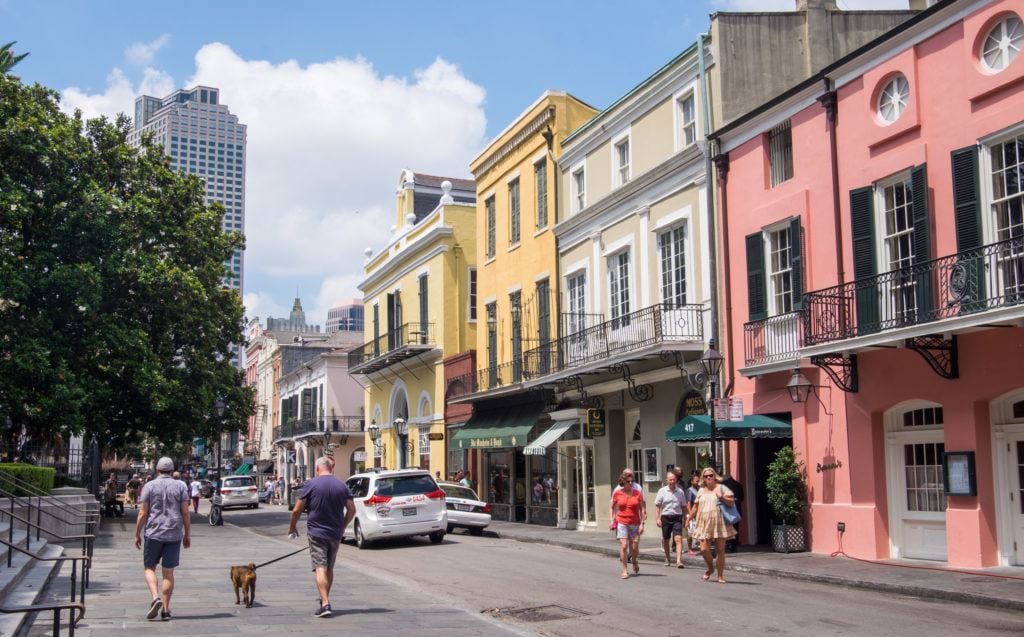
Best Time of Year to Visit New Orleans
While New Orleans typically has weather ranging from warm to hot, often with a good amount of rain, there are variations year-round.
This is what you can expect each month in New Orleans:
January in New Orleans
January is a great month to visit New Orleans because the weather is mild and there are fewer tourists. The city is relaxing from the holidays and gearing up for Mardi Gras in February.
New Orleans temperatures in January range from 44 to 62 degrees Fahrenheit (7 to 17 degrees Celsius). It’s very comfortable weather for walking around and sightseeing. Prices are lower during this month too because there are fewer visitors.
January can be rainy, so keep this in mind. January can also occasionally have snow, as friends of mine experienced on a January trip to New Orleans. It’s very unusual, but it can happen.
February in New Orleans
February is one of the most popular months to visit New Orleans because Mardi Gras, the city’s biggest festival, usually takes place in February. (Because Mardi Gras happens on the day before Ash Wednesday, the exact date varies from year to year.)
February is one of the coldest months of the year, but temperatures may be mild compared to what you’re used to. Temperatures range from 48 to 68 degrees Fahrenheit (9 to 29 degrees Celsius).
There is a decent chance of rain, as well as snow on very rare occasions, but the rainfall in February is not as heavy as other times of the year.
March in New Orleans
New Orleans in March is another popular month to visit. Mardi Gras occasional occurs in March in years when Easter falls a bit later. But beyond that, it’s a wonderful time to visit weather-wise.
New Orleans temperatures in March average from 56 to 74 degrees Fahrenheit (14 to 23 degrees Celsius). It’s a warm month but very comfortable for walking around and the chance of rain is on the lower side.
Even if you’re not coming to New Orleans for Mardi Gras, March is a lovely month to visit, and would be my top choice if you want to enjoy gentle springtime temperatures in New Orleans.
April in New Orleans
April is another of the nicest months to visit New Orleans. Temperatures continue rising, flowers are in bloom, and it’s much quieter compared to Mardi Gras times — with the exception of Jazzfest, a very popular festival.
New Orleans temperatures in April average between 64 to 79 degrees Fahrenheit (17 to 26 degrees Celsius), and can often exceed predictions, so April is one of the first months in New Orleans that feels like summer.
April is the spring month in New Orleans with the least amount of rain, which makes it a lovely time to visit.
May in New Orleans
May looks like a spring month on the calendar, but May is when New Orleans starts to get very hot. This is when we start hitting the hardcore summer months. It’s no surprise that the Bayou Boogaloo takes place in May, with New Orleanians decamping to floats on the water!
In May in New Orleans, the temperature can range between 68 to 86 degrees Fahrenheit (21 to 30 degrees Celsius). Keep in mind that they can rise far beyond that and also dip a bit below.
Some days in May can be quite hot and humid, possibly very much like the deepest days of summer wherever you come from, so keep this in mind when planning a May trip to New Orleans.
June in New Orleans
Not only is June in New Orleans very warm — it’s also the rainiest month of the year. The beginning of summer marks the time of year when tourism begins to drop off for the next few months. That said, if you’re looking to save money on your New Orleans trip, there are deals to be had in June.
The temperature ranges from 75 to 91 degrees Fahrenheit (24 to 33 degrees Celsius).
Humidity in New Orleans is very high in June, and this can make temperatures feel much hotter than they actually are.
July in New Orleans
July in New Orleans is even hotter than June. By this time, tourism has slowed down massively and locals try to get their errands done early in the morning and in the early evening, avoiding going out during the hottest time of day. Tourism is also reduced in New Orleans in July.
June temperatures average between 75 to 91 degrees Fahrenheit (24 to 33 degrees Celsius).
The humidity continues in July, which makes the weather uncomfortable for many visitors. July is also a very rainy month, and there is usually a 50% chance of light rainfall in the afternoons or even a thunderstorm. New Orleanians don’t go outside without an umbrella in July.
August in New Orleans
August is the hottest month of the year in New Orleans. If you’re looking to visit New Orleans but you’re not sure about the heat factor, it would be a good idea to avoid August.
August temperatures in New Orleans average from 77 to 92 degrees Fahrenheit (25 to 33 degrees Celsius). High humidity continues and many New Orleanians take this month to get away. Late August is when hurricane season is often at its worst, and when New Orleans is at the greatest risk, so please keep this in mind when booking your trip.
There is also a good chance of rain most days, so be prepared. August is a slow month in terms of visitors, but again, there are good deals to be had at this time of year.
September in New Orleans
In September, the temperature begins to slowly drop in New Orleans but this might still be hotter than it gets wherever you come from!
Temperatures in New Orleans range from 74 to 90 degrees Fahrenheit (23 to 32 degrees Celsius) and the humidity is time. There is still the chance of rain 30% to 40% of the time. But more importantly, September is one of the historically most active months for hurricanes. This is critical to keep in mind for planning your trip.
If you’re expecting fall temperatures in September, you’ll be surprised — September brings quite a bit of heat.
October in New Orleans
October in New Orleans is when it actually begins to feel like fall. A surprisingly under-the-radar time to visit, the fall months aren’t nearly as busy as the spring months in New Orleans.
New Orleans temperatures in October can range between 65 to 82 degrees Fahrenheit (18 to 28 degrees Celsius). The nights cool down a bit more quickly and the chance of rain begins to decline. Humidity is lower than in the summer months.
October is a great month to visit New Orleans and enjoy pleasant weather, whether you’re a big jazz fan or not!
November in New Orleans
November is another wonderful sleeper month to visit New Orleans — especially if you time your trip around Thanksgiving, when travelers are more focused on visiting family than exploring new cities.
New Orleans temperatures in November range from 53 to 72 degrees Fahrenheit (12 to 22 degrees Celsius). While there is always a chance for rain, humidity is a bit lower than the summer months.
If you want to visit New Orleans when you’ll be happy to be outside any time of day, November is a great option.
December in New Orleans
December is a great month to visit New Orleans because the weather is mild and there are fewer tourists. You have the bonus of holiday cheer, and the city erupts with Christmas decorations.
New Orleans temperatures in December average from 50 to 66 degrees Fahrenheit (10 to 19 degrees Celsius). It’s very comfortable weather for walking around and sightseeing and there are fewer tourists since it’s right before peak season.
As always, there’s a chance of rain in New Orleans, so be sure you’re ready with your umbrella.
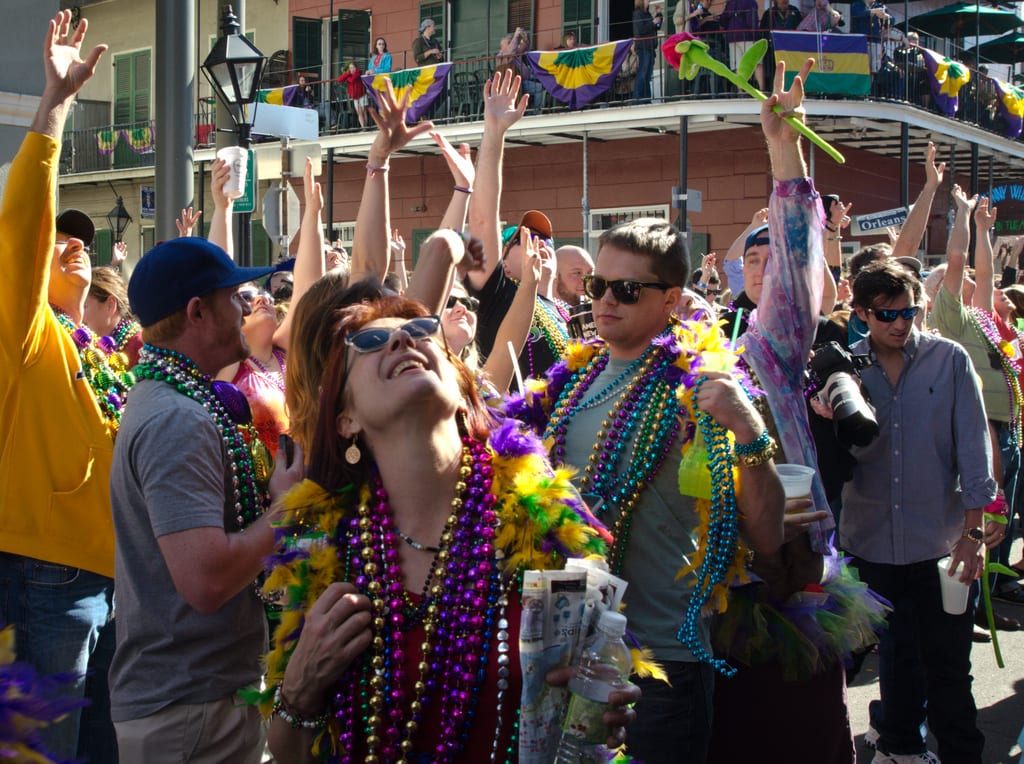
Best New Orleans Festivals
New Orleans is one of the best festivals in the United States, known for its incredible festivals and events that occur throughout the year. Mardi Gras and Jazzfest are the two biggest festivals of the year, but there are smaller events that take place throughout the year.
Mardi Gras takes place the day before Ash Wednesday in February or March each year, and the city explodes in festivities. During Mardi Gras and the days beforehand, you’ll welcome parades by local “Krewes,” parties, concerts, and costumed celebrations of all kinds.
Mardi Gras is the kind of event every traveler needs to experience at least once! I loved my time at Mardi Gras.
New Orleans Jazz & Heritage Festival, better known as Jazzfest, takes place in April each year (with a 2021 exception of October). Musical superstars from around the world converge on New Orleans for a chance to perform. These days, Jazzfest brings thousands of music fans to New Orleans each year.
Another favorite of mine is the Bayou Boogaloo, a very local festival were New Orleanians get out onto Bayou St. John, right in the middle of the city, in boats and floats! Well worth the experience if you’re in New Orleans in mid-May.
Fourth of July weekend brings Essence Festival, a festival geared toward Black women featuring music and comedy performances, as well as beauty, fashion, entertainment, and wellness expos.
The French Quarter Festival takes place from late September into early October, when musical performances and parties fill the streets of the French Quarter. (I know, I know — more than usual, because there’s always a party in the French Quarter.)

Hurricane Season in New Orleans
New Orleans was changed forever in 2005 when Hurricane Katrina hit, destroying many parts of the city and hurting much of the Gulf Coast. More than a decade later, Katrina looms in the minds of both New Orleanians and visitors today, so I don’t blame you if hurricane season is on your mind.
Hurricane Katrina was an outlier in many ways, but it’s still wise to plan your trip to avoid the worst of New Orleans’ hurricane season.
Hurricane season in New Orleans technically runs from June through November, but the peak time for severe storms is from late August through late September. While every year is different, August and September are when you have the greatest likelihood of severe hurricanes.
In New Orleans, there is a chance of hurricanes from June to November. If you want to avoid the chance of a storm altogether, it’s best to not visit during these months. There can be high winds, heavy rain, and other dangers as a result of these storms. A very severe storm is rare but is still possible.
If you do end up in New Orleans during a hurricane, please listen to the authorities and evacuate if they tell you to evacuate. Don’t ride out the storm. Someone could die trying to rescue you.
Travel insurance is essential for all trips, but especially so for trips to hurricane-prone regions. I use and recommend World Nomads for trips to New Orleans.
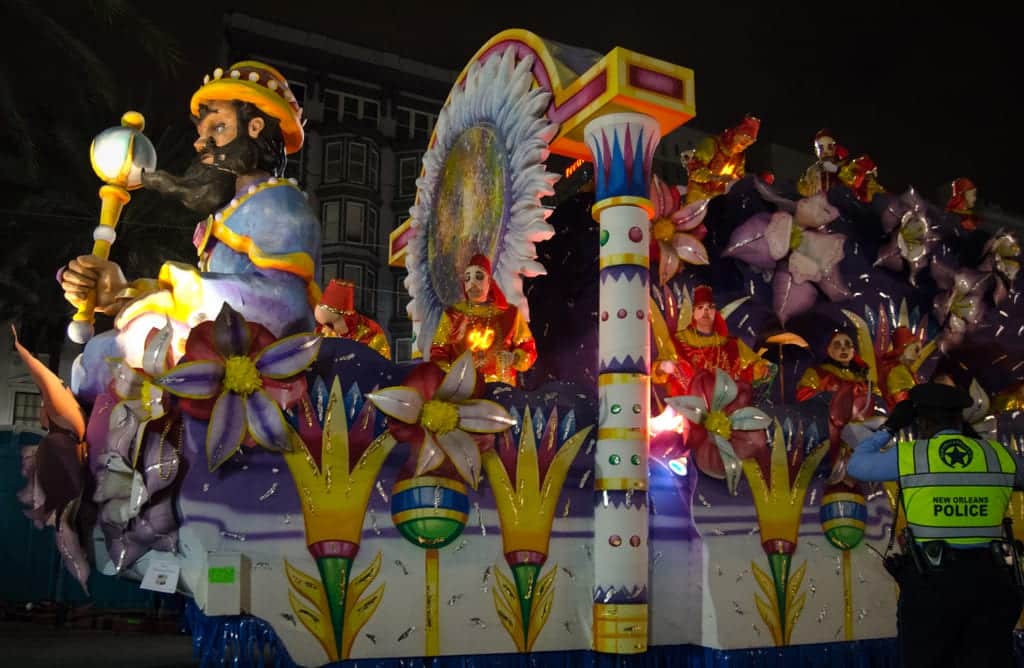
Best Time to Visit New Orleans with Kids
While most families choose to take family vacations during the summer months, when their kids are off from school, I don’t recommend this for New Orleans. The heat and humidity are tough to handle, even for hardier kids from Florida or Texas. If you do choose to visit during this time, a hotel with a pool is essential.
Instead, I recommend visiting New Orleans during the cooler months — perhaps Thanksgiving weekend, or even Christmas break or February vacation. The weather is more pleasant, and this is a bit of a quieter time of year, especially around Thanksgiving or Christmas.
Is Mardi Gras kid-friendly? It can be! Mardi Gras is a celebration for all of New Orleans, and that includes local kids! You’ll find plenty of kids lined up at parades trying to catch beads. And the local carnivals outside New Orleans don’t attract as many out-of-towners, but they tend to be very family-friendly.
That said, a lot of travelers use Mardi Gras as an excuse to get intoxicated and behave badly. Thankfully, most of this scene is confined to Bourbon St. and the vicinity. If I had young kids, I wouldn’t bring them to Bourbon St. during Mardi Gras. Especially not at night.
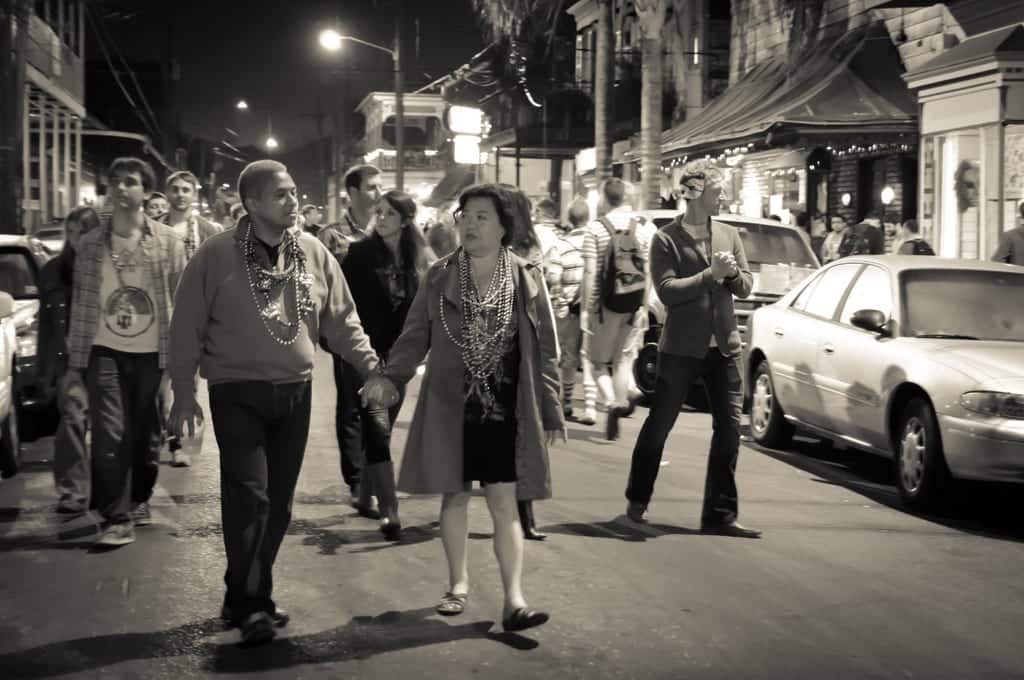
Best Time to Visit New Orleans For Low Humidity
New Orleans is a city known for its humidity, so it pays to avoid the most humid time of year. If you hate humidity, you should avoid visiting New Orleans in the summer at all costs.
In July and August, the humidity levels are at nearly 100% every day. Combine that with the sky-high temperatures of the Deep South and you’ve got a style of weather that’s hard for many people to handle.
I actually recommend visiting in the colder months of the year to get some relief from humidity. December and January are both good choices. You never end up with zero percent humidity here, but it’s much more tolerable than usual.

Cheapest Time to Visit New Orleans
For the lowest prices, the summer is the time to visit New Orleans. As long as you’re okay with the weather! The temperatures are very hot, the humidity is at an all-time high, and there is the chance of rain, thunderstorm, or even hurricanes.
These factors keep tourists away, which drops prices and crowds significantly. But if that’s a sacrifice you’re happy to make, go for it.
The lowest hotel rates of the year tend to be in August and flights into New Orleans tend to be cheaper throughout the summer. For the lowest prices, July and August would be the best time to visit.
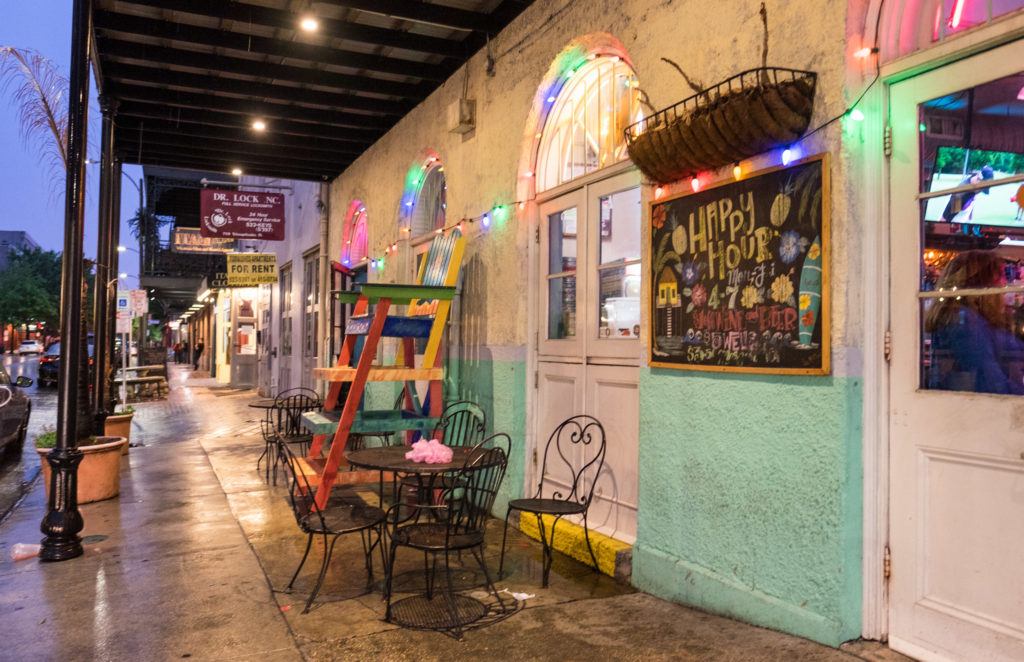
Overall Best Time to Visit New Orleans
New Orleans is great any time of year, but overall, the best time to visit New Orleans is from February through May. There is so much to do in New Orleans in these months, the weather is mild, and there is lower humidity, lower precipitation, and no chance of hurricanes during these months.
Of course, you’ll find many people doing the same thing! If you want fewer crowds, aim for November or December.
More on New Orleans:
Solo Female Travel in New Orleans: Is it Safe?
Celebrating Mardi Gras in New Orleans: What You Need to Know
Exploring New Orleans’ Garden District
See all New Orleans posts here.
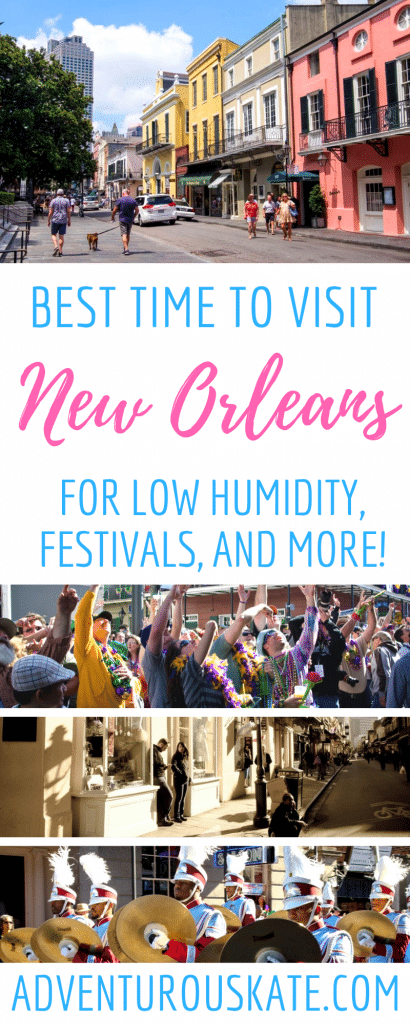
Have you been to New Orleans? When did you visit? Share away!